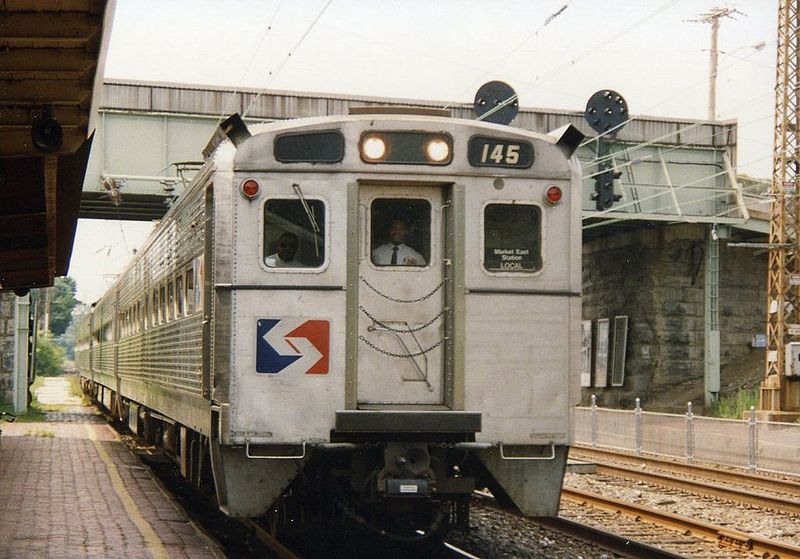RAILROAD SIGNALS of the U.S.
SEPTA's
Regional Rail (Commuter) Lines
Unlike Baltimore's MARC service, SEPTA runs their commuter trains 7 days a week.
SEPTA offers a day pass for $15, which allows unlimited riding all day long on all of their lines/systems.
I've left the old route designations here for reference, and just in case you're more familiar with them.
Notice with the old R1 line, there is no longer a destination GLENSIDE, since the Warminster and Doylestown lines both service Glenside.
R1 Airport Line
R2 Warminster Line
R2 Wilmington / Newark Line
R3 W Trenton Line
R3 Media / Elwyn Line
R5 Lansdale / Doylestown Line
R5 Paoli / Thorndale Line
R6 Cynwyd Line
R6 Manayunk / Norristown Line
R7 Trenton Line
R7 Chestnut Hill East Line
R8 Chestnut Hill West Line
R8 Fox Chase Line
A Quick History
SEPTA was created by the Pennsylvania state legislature in 1963 to coordinate a multi-modal transportation system for Philadelphia and its surrounding counties of Bucks, Chester, Delaware and Montgomery.
In 1968, SEPTA took over, or acquired, the Philadelphia Transportation Company, aka, PTC.
SEPTA acquired Red Arrow in 1970, and in 1976, Frontier.
Today SEPTA is the 5th largest transit system in the United States, with about 500,000 daily riders making approximately one million trips. SEPTA is one of the most multi-modal systems in the U.S. with approx 2300 busses, subway cars, commuter rail cars, trolleys, and trolley busses. All total, they travel around 78 million miles annually on a total of 195 routes with over 9,200 employees. (Stats and dates from Trolley Driver).
The commuter lines of SEPTA can be traced back to the days of the Pennsylvania and Reading Railroads (and then the Penn Central). SEPTA took over the regional rail service in 1983. Back in the "old" days, untill 1984, the two lines had separate terminals in the Center City. The Pennsy trains terminated at Suburban Station, and the Reading trains terminated at the Reading Terminal. The Reading Terminal was replaced by the Market East Station, which partially sits under the Reading Terminal, and is part of the Center City Commuter Connection (phew, what a mouthfull!). This change resulted in a "combining" of the two systems, allowing through train service.
In the old numbering system, each Pennsy line was "paired" with a Reading line, giving the route a path through the Center City. The lines were numbered R1 through R8, except for the R4 line. The color coding of the lines was also dropped in July of 2010 when the route numbers were dropped.
SEPTA's regional rail service currently has 13 lines (listed above) serving 153 stations. 51 of the stations are in Philadelphia proper, 41 are in Montgomery County, 29 are in Delaware county, 16 are in Bucks county, and 10 are in Chester county.
The old Pennsy lines were:
the Airport line
the Chestnut Hill West line
the Cynwyd line
the Media/Elwyn line
the Paoli/Thorndale line
the Trenton line
the Wilmington/Newark line
The old Reading lines were:
the Chestnut Hill East line
the Fox Chase line
the Lansdale/Doylestown line
the Manayunk/Norristown line
the Warminster line
the West Trenton line
More info can be found at:
http://en.wikipedia.org/wiki/SEPTA_Regional_Rail
http://thetransitpass.wordpress.com/2010/01/11/new-septa-regional-rail-cars/
article on the new Silverliners

Photo by Sean Lamb, from Google.... taken near
Valley Forge PA back in 2005. Nice Pennsy PL signals in the background!
Sorry, we're still workin on somethin to put here, please check back later
NEW 02/28/2011
Last Updated: 30-May-2011